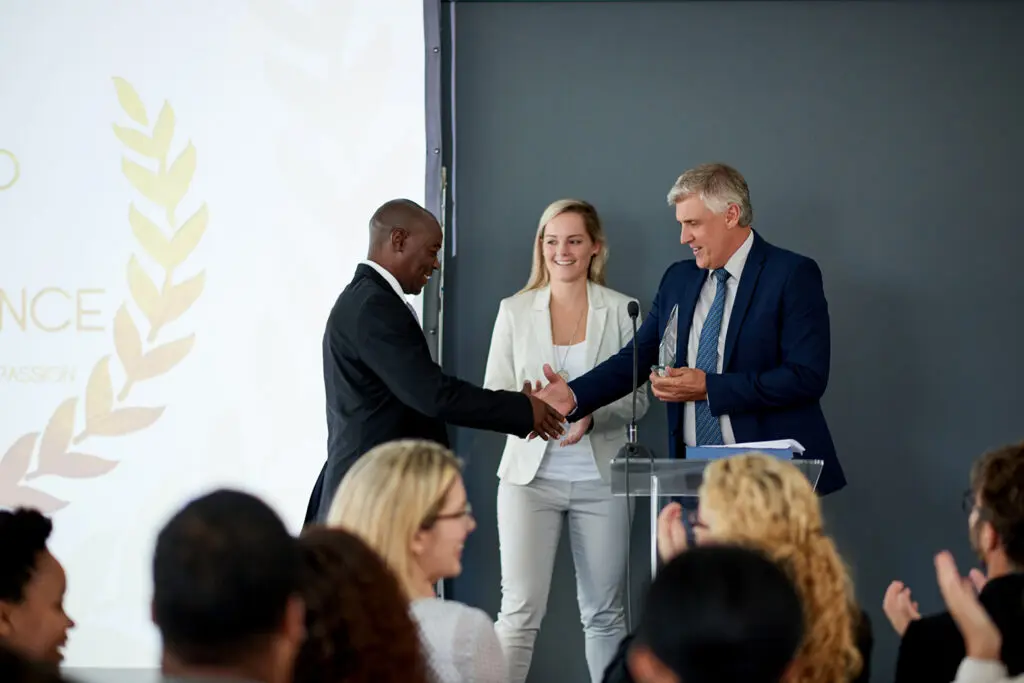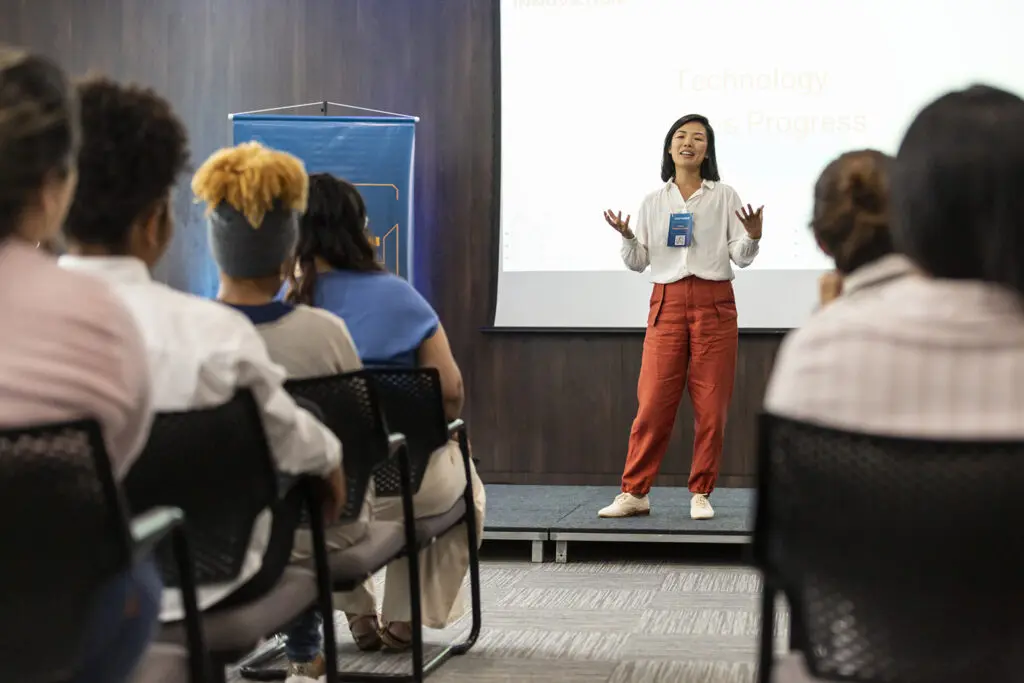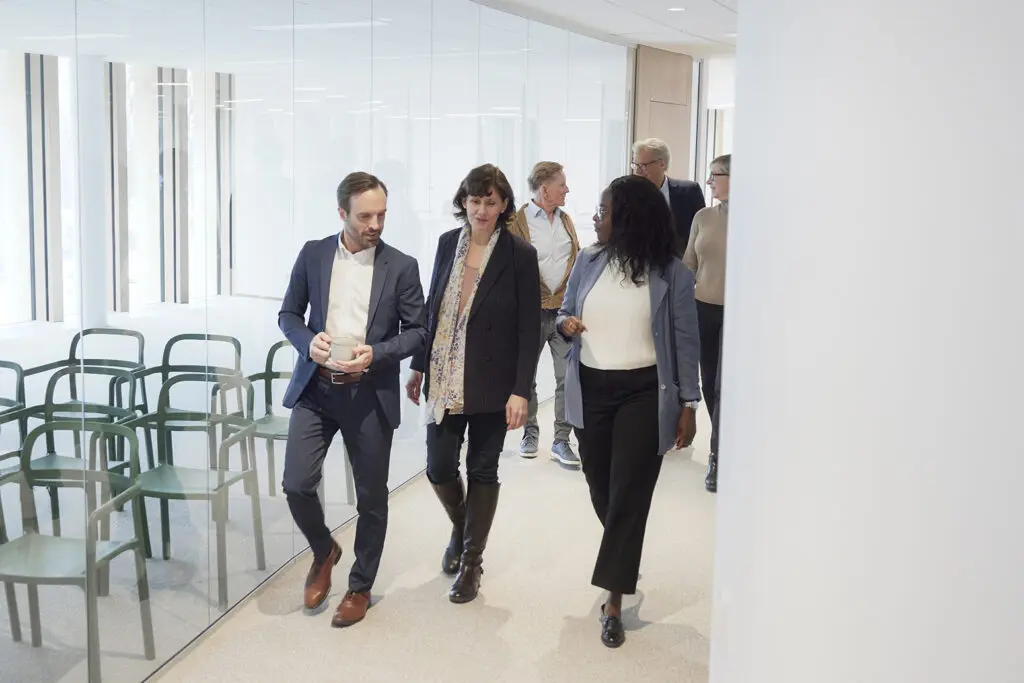Ninety two percent (92%) of college-aged individuals are on social media. At the same time, a 2023 Council for Advancement and Support of Education (CASE) study found that institutions with structured alumni engagement see up to 40% higher donor participation. With soaring social media use and an opportunity for strategic engagement, your higher education institution is uniquely positioned to leverage these tools and engage young donors in building a lifelong connection to their alma mater.
According to research from CASE, colleges that prioritize alumni engagement can see a strong return—earning an average of $5.60 for every $1 invested. Social platforms like Instagram and LinkedIn are especially effective for bringing alumni-student connections to life, helping younger donors feel recognized, valued, and motivated to contribute. To increase giving from students and newer alumni, consider building social media strategies that spotlight real connections, especially those between alumni and current students.
Social media is one of the most powerful tools for engaging young alumni philanthropically. It meets them where they are, turns giving into a shared experience, and makes impact visible in real time. It’s not just about raising funds but about building a lasting community around shared values and stories, all while using data-driven insights to continually refine and strengthen engagement strategies.
Melissa Rothberg, Executive Vice President, CCS Fundraising
Why Engaging Young Alumni Through Social Media Matters
As new alumni transition from college to career, their connection with their alma mater is still fresh. This is a pivotal opportunity to foster long-term relationships. However, traditional outreach methods, such as mass emails or alumni events without follow-up or clear calls to action, often fall short. The 2025 Giving by Generation report found that all generations except for Boomers strongly prefer online giving over other options. Moreover, “the younger the donor, the more likely it is that social media will play a role in their giving.”
Higher education institutions must meet young alumni where they spend most of their time. Compare how young users engage across social platforms.
young adult Social Media usage by Platform
| PLATFORM | % OF 18-29-YEAR-OLDS WHO USE IT |
| YouTube | 93% |
| 76% | |
| 68% | |
| Snapchat | 65% |
| TikTok | 59% |
| 46% | |
| 43% | |
| 40% | |
| X (formerly Twitter) | 38% |
| 30% | |
| BeReal | 10% |
Source: Pew Research Center Social Media Fact Sheet
Social media platforms help colleges highlight genuine relationships between alumni and current students by telling alumni stories that resonate. Sharing updates, milestones, and accomplishments adds depth to the connection and shows the lasting impact of the alumni community. When done effectively, social media posts can demonstrate mentorship, community-building, and shared school pride, turning passive followers into inspired young donors.
Tailor your Alumni Engagement to Platform and Audience
Not all content is created equal, and not every message belongs on every platform. Successful outreach depends on customizing tone, visuals, and content format to match the audience’s expectations.
Instagram is a powerful tool to reach young donors. It is ideal for personal, short-form emotional storytelling and visual moments. For example, consider posting a video of a graduating class, or a student’s first job offer with special thanks to an alumnus. Use Instagram to demonstrate your college or university’s culture and spirit, allowing young alumni to connect on an informal and deeper level.
LinkedIn, on the other hand, is a professional network. Use this platform to share detailed student and alumni success stories or career milestones. This is a space to show your higher education institutions’ long-term impact on careers and networks.
YouTube
Youtube is an effective platform that helps show in-depth student or alumni profiles, behind the scenes campus experiences, or day in the life videos that highlight an institution’s unique values. With its strong search capabilities and wide reach, YouTube also serves as a powerful tool to allow prospective donors and young alumni to discover your message at any time. The platform supports both professional and authentic content, making it a flexible space to deepen alumni engagement and tell a story over time.
To truly reach a younger audience, posts should be simple, clear, and emotionally resonant. Ideally, a single post should easily showcase how alumni-driven philanthropic investment is making a difference for students and your university’s community.
understand Gen Z and Millennial Donor Behavior
Younger generations are rethinking philanthropy, which means advancement departments need to stay agile to evolving donor behavior, including in their social media campaigns.
Gen Z and Millennials are more likely to engage with alma maters that:
- Offer user-friendly digital experiences
- Share compelling stories
- Demonstrate measurable outcomes
- Reflect values in branding, diversity, and tone
STUDENT PERSPECTIVE
“I am always more likely to engage with a post when I can tell that it reflects my values or something that I care about. Having a compelling story that builds community will keep me focused on the post rather than clicking past it.”
~ Natalie Malarkey, college student and CCS Summer Intern
According to the 2025 CCS Philanthropy Pulse, 63% of organizations use digital campaigns to engage next-gen philanthropists, and for good reason; younger donors are interested in transparency, authenticity, and impact more than obligation. Social media and digital engagement ensure accessible, personalized, original, mission-driven outreach.
Nurture a Long-Term, Donor-centric Culture through young alumni engagement
Higher education institutions must view alumni engagement strategies as long-term investments rather than one-off solicitations. Repeatedly engaged donors are far more valuable over time. Donor retention (cultivating long-term relationships) significantly outperforms one-time solicitations; in 2023, the average donor retention rate was about 45%, but the retention rate for donors who had given two or more consecutive years was over 60%. This shows that it can take five to 10 years of consistent engagement before a donor makes their first major gift. It is essential for more reliable, long-term revenue to build donor relationships early and intentionally.
Universities are moving beyond one-day fundraising events and embracing more integrated, year-round advancement strategies, weaving them into the student experience. Today’s engagement efforts focus on building authentic relationships early by highlighting student involvement, shared values, and visible impact. Newer generations want to give because they feel personally connected to their cause and see how those gifts make a difference.
Newer generations cherish involvement and want to see first-hand how their efforts make a difference. Students want to see what benefits of staying connected, and alumni hope to understand how their involvement is shaping the future generations.
STUDENT PERSPECTIVE
“As a current college student, I have seen fundraising efforts take many forms. From my experience at my university, I have felt more connected and inclined to donate when I see posts that highlight our strong sense of school spirit. Watching alumni return to campus and seeing the lasting bond they still have with the university inspires me. It makes me feel confident that I will want to give back and support my school as I grow into my own career.”
~ Natalie Malarkey, college student and CCS Summer Intern
STUDENT PERSPECTIVE
“From my student perspective, I have seen first-hand how fundraising works best when it feels personal. I have been to events on campus where the focus was more on sharing and connecting with donors rather than just asking for money. When donors have the opportunity to hear directly from students and see the impact they make, it sticks with them. It’s not just about giving… it’s about feeling part of something meaningful and making long-lasting connections.”
~ Melissa Elwood, college student and CCS Summer Intern
Measure your young alumni social media efforts
You can and should track the efficacy of your social media efforts through clickthrough rates. With a nonprofit industry benchmark of 1-3% for social media posts, clickthrough rates matters because they measure how people engage with the content.
Connect With young alumni where they are
Current student and young alumni engagement is more than raising funds—rather, effective engagement is about creating a sense of belonging, shared purpose, and pride. To engage a growing base of constituents with minimal friction, consider meeting young donors where they are: on social media. By employing social media platforms intentionally to drive a more dynamic digital environment, your college or university will strategically enhance both its footprint and toolkit.
When young graduates feel that their stories matter and their contributions count, they become lifelong givers and advocates for your institution.
More Insights
Signal Strength: Philanthropy and the Future of Public Media Webinar
Gain insight on navigating funding shifts in the public media sector from this webinar, which includes a panel conversation with experts in the field.
Perspectives on Philanthropy | Giving USA 2025
Explore this on-demand video presented by CCS Fundraising in partnership with the Indiana University Lilly Family School of Philanthropy, which reveals and discusses the key findings from Giving USA 2025: The Annual Report on Philanthropy.






